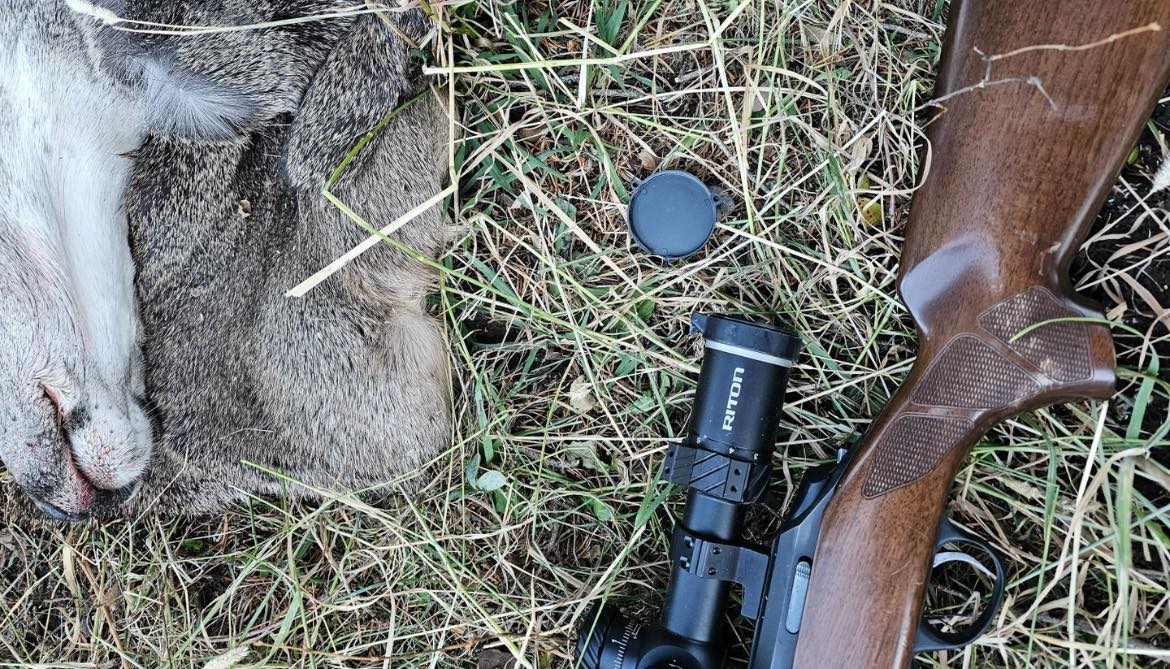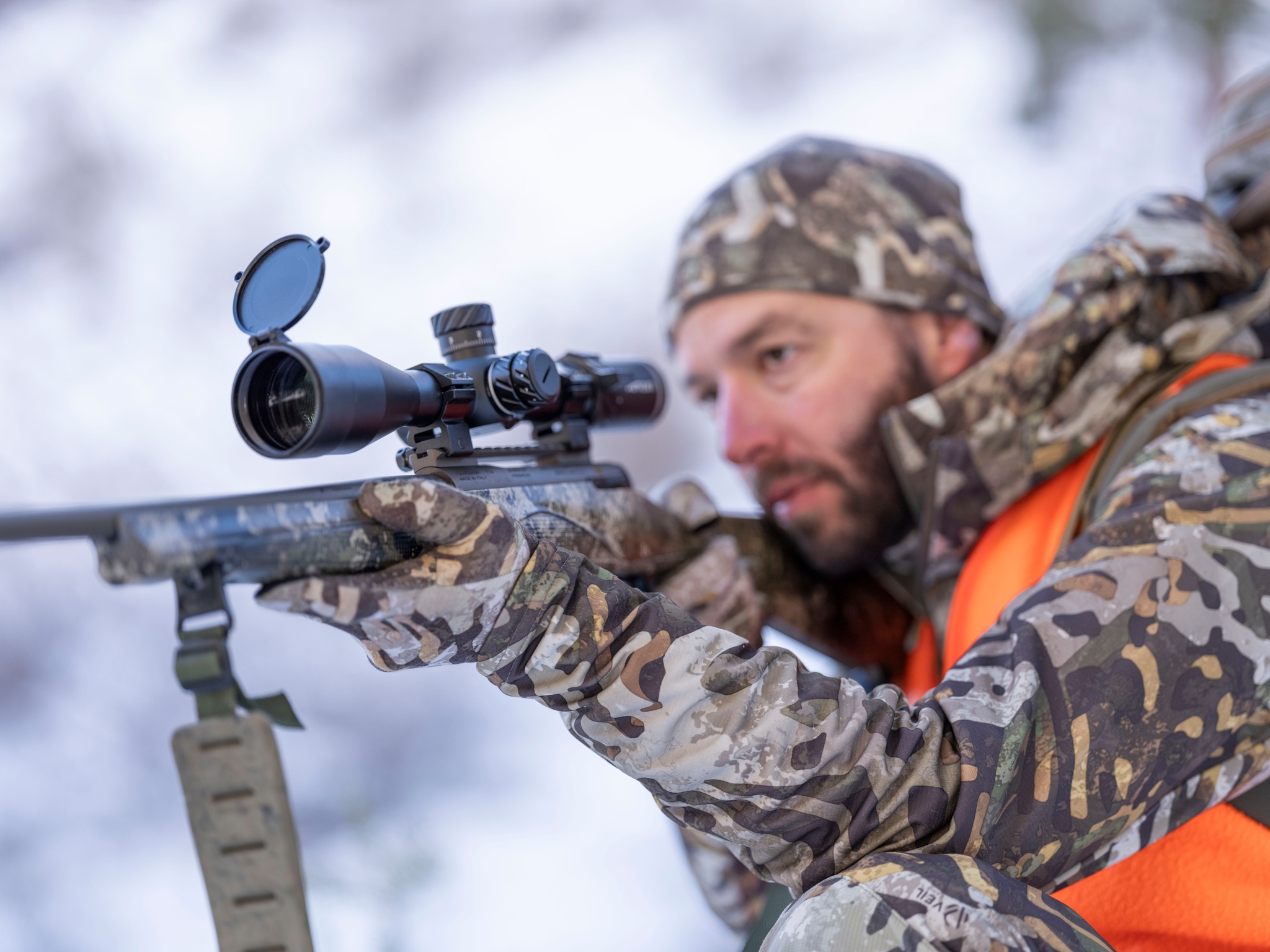Compromise is a delicate thing. We all want what we want, and we don’t want to give up a lot to achieve it. When it comes to our hunting gear, many of us are more rigid in our demands than in other areas of our lives.
Try as we might, when it comes to hunting optics, there will always be compromise. While we would all like to top our favorite deer rifle with a crystal-clear 1-20×32 scope that weighs just eight ounces and comes in at only 11 inches in length, the reality of optical physics means we will have to choose what is really important when it comes time to select our scope.
So how do you prioritize your hunting scope? Do you need magnification above all else? Do you need it to be lightweight because you’re hunting on the move? Do we even dare open the pandora’s box that is low-light performance?
Over time, manufacturers have made a lot of these decisions for us by bringing models to the market that don’t force the hunter into one extreme or another when it comes to the tradeoff that is being made. A perfect example of this is the 3-9×40 scope chassis. It’s become the gold-standard for hunting scopes because at the end of the day, it has fewer weaknesses than other scope configurations.
If you want to maximize something when it comes to optics, you’ll have to give something else up. Let’s dive into what that really means for your hunting setup.
PRIORITY – Low-Light performance
TRADEOFFS – Magnification, lightweight, clarity
For a scope going on a hunting rifle, you can make a very real case that low-light performance should be the main consideration. With that in mind, I can’t possibly overstate the importance of understanding what an exit pupil is, and how it affects your ability to shoot in low-light conditions.
In its simplest terms, the exit pupil is the column of light that exits the back of the scope and makes it to your eye. Calculating the exit pupil of a given scope is easy, and will give you a range that coincides with your magnification range.

To calculate exit pupil, divide the objective lens of your scope, by the magnification setting. Obviously, your exit pupil changes as you change magnification. On a 3-9×40 scope, set on 9X, 40/9=4.44mm.
This is the first lesson of the popularity of the 3-9×40 scope. The magic number you should always keep in mind for low-light shooting, is 4mm. That is your target exit pupil size. This is a general rule. Some shooters may be able to get away with less, and some shooters may need more. More often than not, however, a 4mm exit pupil will deliver a sight picture to your eye that makes shooting in low light, a workable feat.
The exit pupil will get larger, as the magnification is decreased. So on a 3-9×40 scope, where the magnification is maxed out, but the exit pupil is still above 4mm, you have a perfect balance of magnification and low-light performance.
That said, a 40mm scope, with a magnification of 12X or 16X, is going to generate an exit pupil under 4mm, and perhaps even under 3mm. In this case you either need to increase the size of your objective lens to compensate for the additional magnification, or simply not use the magnification that high in suboptimal light conditions. So, you’re giving up magnification.
If you choose to go with more magnification and a larger objective lens, the size and weight of your scope is going to increase to accommodate the larger optical system. Here, you’re giving up a lightweight addition to your scope.
Lastly, if you decide that you can deal with the larger objective lens and scope footprint to achieve a suitable exit pupil, you may have to sacrifice the clarity of the scope. The larger the lenses of an optical system, the harder it is to achieve edge-to-edge clarity. If you put two scopes from the same brand, and the same family, next to each other, and make the settings mirror each other, you’ll almost always see that the scope with the small optical system is clearer.
So, if low-light performance is what’s really important to you, make sure you understand exit pupil, and select the scope configuration that matches the rest of your priorities.
PRIORITY – Clarity
TRADEOFFS – Magnification, low-light performance
We started with low-light performance, because it lays the groundwork for all the other tradeoffs that you may encounter when choosing a scope. You can probably already work out why this is true, but let’s cover it again anyway.
While it’s true you may be able cheat around the edges going with one manufacturer over another, what will largely remain true is that a smaller objective lens, and less magnification is generally clearer than larger optical systems. The more magnification you add, the larger the objective lens, the tougher it is to have a crystal-clear scope.
Staying in a smaller optical system may mean you have to sacrifice low-light performance if you try to get away with more magnification, but don’t also include a larger objective lens to go with it.
Here’s another important factor. Most scope makers in a given price range are working with remarkably similar materials, from very few suppliers. There are no doubt design elements, and special reticles, and warranties that help set optics brands apart, but many of the internal components are strikingly similar, if not downright identical between manufacturers.
That means the likelihood of finding major differences in clarity in a specific price range is relatively small. What differences you are able to find, are probably going to be more a function of chassis design than elements of the scope.
PRIORITY – Magnification
TRADEOFFS – Lightweight, low-light performance, clarity
Mo’ mag, mo’ problems, that’s what I always say.
No, really, I do. Many hunters look at magnification as the holy grail of accuracy. That they could make the shot if they just had more magnification. Very rarely is that actually the case.

Magnification doesn’t just bring the target closer, it magnifies everything. If you are on a good bench, and know what to look for, you can check your pulse once you get above about 10X. Hunting from a tree on a windy day? Every sway of that tree will be magnified as well.
While we all tend to think we need to prepare for 400-yard shots, the reality even for many western hunters, is that shots taken with a rifle are much closer than we imagine, and you don’t need 24X to make a 200-yard shot.
As we’ve already talked about, that larger magnification is going to require a larger objective lens unless you want to sacrifice low-light performance. Which means you have to give up your dreams of a compact, lightweight rifle setup.
Don’t forget, with larger lenses come clarity concerns.
Magnification can solve one problem, maybe two. At the end of the day, though, it can cause many more.
PRIORITY – Lightweight
TRADEOFFS – Magnification, Low-light performance
By now, I can probably let you do the work on this by yourself. A lightweight scope is going to have a relatively low magnification, and without a high magnification there is no need for an oversized objective lens.
For many hunters, this is all the scope they need anyway. Hunting in dense cover, or along ag edges, maybe a 6X scope is all you need.
Where we run into problems is when the conversation turns to long-range hunting in low-light conditions. Kiss your dreams of a rifle under eight pounds goodbye. A scope to do that work is going to go over a pound in weight every time, by itself. It just can’t be done with the limitation of optical physics.
All of these considerations were assuming you are comparing scopes of a similar build quality and construction. Comparing a $100 scope to a $2,500 scope is going to expose some weaknesses is the more affordable option, but is hardly an apples-to-apples comparison.
Another wildcard that has grown in popularity in the last handful of years is the 30mm scope chassis. I have long been a fan of 30mm scopes because of their robust construction. There was some mild scandal in the early days of 30mm scopes as some brands were simply placing one-inch (25mm) optical internals in a 30mm tube. For the most part this practice has been discontinued and 30mm scopes come with a slightly larger erector system that fits the chassis.
The exit pupil concept is exactly the same for a 30mm scope or one-inch model. The larger lenses in the 30mm scope may be able to handle light management a little bit better, but any change to the column of light itself is negligible.
On the other hand, 30mm scopes are generally considerably heavier than their one-inch counterparts. Whether the additional strength is worth the added weight is a decision every hunter has to make for themselves based on how they hunt.
This list was hardly exhaustive of all the tradeoffs and considerations that one has to work through when choosing a scope. That said, I hope that it helps bring some key optics principles into focus so you can make the most educated decision the next time you put glass on your hunting rifle.
